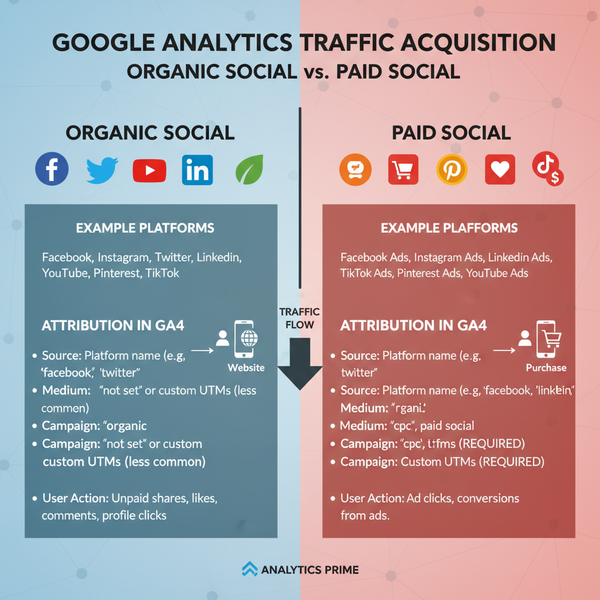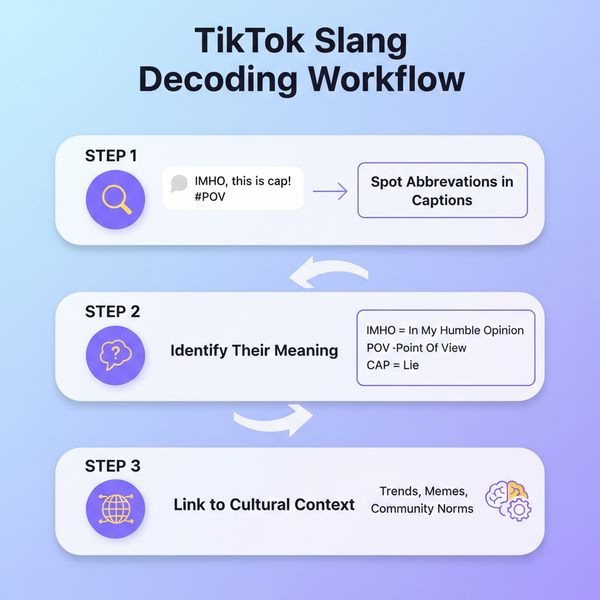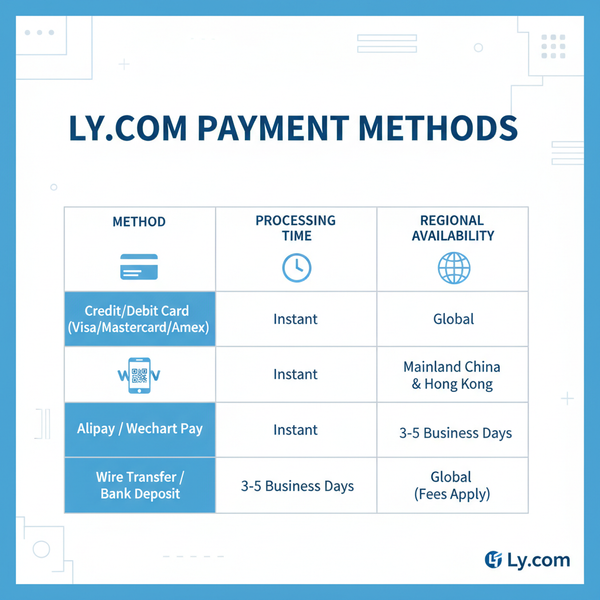Viral Hashtags: A Practical Guide to Finding, Creating, and Amplifying Trends
Turn viral hashtags from guesswork into a repeatable playbook. Learn how to find, create, seed, and measure trends across TikTok, X, YouTube, and LinkedIn.

Hashtags still organize and accelerate attention across social platforms, but “going viral” isn’t random luck. This guide streamlines the process into clear, repeatable steps you can apply across platforms, from crafting and seeding to measurement and governance. Use it to design tags people remember, want to join, and can replicate with minimal friction.
Viral Hashtags: A Practical Guide to Finding, Creating, and Amplifying Trends
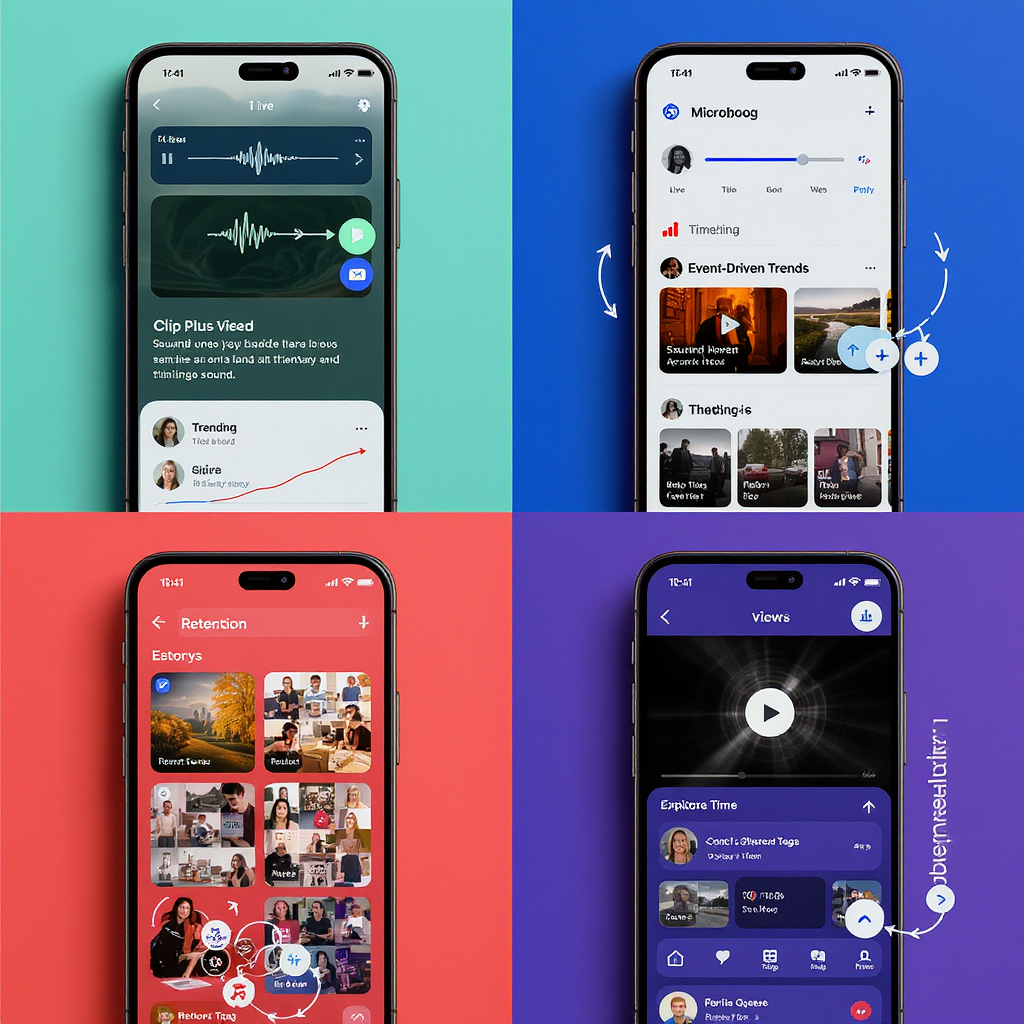

Viral hashtags are one of the internet’s simplest growth engines. A few characters, placed in the right culture at the right moment, can generate disproportionate reach, participation, and brand memory. This guide turns the fuzzy art of “going viral” into a practical playbook you can apply across platforms—whether you’re a creator, a brand, or a community lead.
What makes a hashtag go viral
A viral hashtag is a short, shared prompt that travels rapidly across networks, accumulating posts from many unique people in a short period. The mechanics:
- Network effects: Each new participant exposes their own followers, creating compounding, branching paths of discovery. The more unique creators who post, the faster the growth.
- Algorithmic boosts: Platforms surface hashtags with rising post velocity, high completion/watch time, and strong sharing or comment rates. Early momentum often earns additional distribution.
- Social proof: Seeing many peers use the same tag lowers participation friction. People join “what others like me are doing” more than they join ads.
- Discovery utility: Hashtags still route content to themed feeds, search results, and topic pages. Even as recommendation engines improve, tags remain a low-cost indexing signal.
Why they still matter:
- They bundle a concept the internet can act on.
- They anchor multi-post campaigns into a single, trackable thread.
- They help you earn attention beyond your immediate follower graph.
How virality happens in practice
- Cultural timing: Latch onto a moment the audience already cares about (a release, event, meme, or seasonal shift).
- Simplicity and memorability: Short, punchy, pronounceable, and easy to spell. Think #IceBucketChallenge rather than a sentence.
- Emotional resonance: Joy, surprise, pride, outrage, or a shared in-joke. Emotion fuels sharing.
- Meme formats: Provide a repeatable structure—“before/after,” duet/remix, dance move, transformation, reveal, or a fill-in-the-blank prompt.
- User participation: Make the audience the star. Clear instructions, low effort to try, and visible recognition amplify submissions.
Platform-specific playbooks
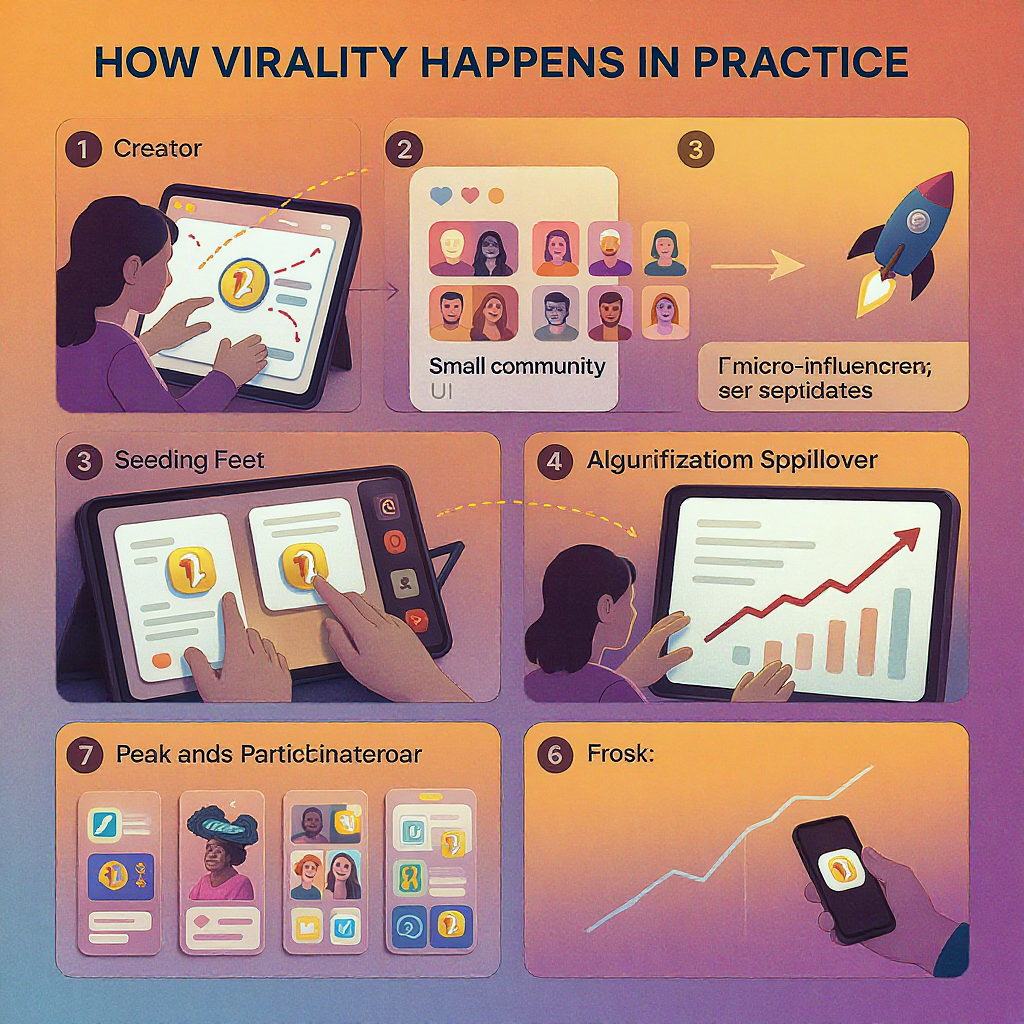
TikTok: Sound-plus-tag dynamics
- Pair your hashtag with an original sound or a trending audio. Many users discover through sounds; the tag ties those videos into a narrative.
- Use duet, stitch, remixes, and templates to lower the creation barrier.
- Keep instructions on-screen, 5–7 words, and demonstrate the format in your seed posts.
X/Twitter: Event-driven trends
- Real-time windows dominate. Use your tag alongside the event tag for context (e.g., #YourTag + #WWDC).
- Quote-tweets and concise call-to-action threads help. Encourage poll participation and retweet prompts.
- Time-zone sequencing matters—align with peak conversation hours.
Instagram: Niche and community tags
- Blend your unique tag with 5–8 niche/community tags to anchor into existing tribes.
- Carousels and Reels give you two shots at discovery; place the tag in caption and on-screen.
- Feature UGC in Stories and Highlights to create a feedback loop.
YouTube Shorts: Discoverability and session time
- Hashtags in title/description help indexing, but thumbnail + hook dominate. Make the format obvious in the first 2 seconds.
- Encourage duets/remixes via downloadable templates or green screen prompts.
- Series naming (#YourTag Ep. 1, 2, 3) builds habit and return visits.
LinkedIn: Professional angles
- Use tags that signal industry value (#DevTips, #UXCaseStudy) and tie to your brand tag.
- Invite commentary: “Share your framework with #YourTag and we’ll feature the best.”
- Weekday mornings and pre-lunch windows tend to perform better for B2B audiences.
| Platform | Best For | Trigger | Key Mechanic | Pitfalls |
|---|---|---|---|---|
| TikTok | Challenges, remixes | Sound + Tag | Duet/Stitch | Too complex choreography, unclear prompt |
| X/Twitter | Live events, debates | Breaking news | Quote-Tweets | Hashtag stuffing, off-topic hijacks |
| Lifestyle niches | Community rituals | Stories + Reels | Over-broad tags dilute signal | |
| YouTube Shorts | Series formats | Hook-first content | Playlists + End screens | Poor thumbnail/hook kills CTR |
| Thought leadership | Work rituals | Comment prompts | Overly cute tags hurt credibility |
Finding and validating high-potential hashtags
- Trend discovery tools:
- TikTok Creative Center (top songs, hashtags), Instagram Explore, YouTube Trends, X Explore.
- Google Trends to correlate cultural interest spikes.
- Social listening:
- Use tools like Brandwatch, Sprout Social, or Talkwalker to track mention velocity and unique author growth.
- Autocomplete mining:
- Type your core keyword into platform search and note suggested completions. Look for short, rising variants.
- Competitor and creator audits:
- List 10 creators your audience follows. Extract their top 20 posts and note recurring tags. Identify gaps where you can own a tag.
- Reddit and news scanning:
- Subreddits surface emerging language. News cycles provide timing. Map recurring phrases to hashtag candidates.
- Early-signal indicators:
- Velocity: 2–5x increase in daily posts or views over 48 hours.
- Author diversity: rising count of unique creators, not just volume from a few accounts.
- Engagement quality: saves, shares, and completion rate outperforming your baseline by 20%+.
Quick, code-light validation using your exported post data:
## Input: CSV with columns [date, hashtag, posts, views, unique_authors, shares, saves]
## Output: simple early-signal score for each hashtag
import pandas as pd
df = pd.read_csv("hashtag_stats.csv", parse_dates=["date"])
recent = df[df["date"] >= df["date"].max() - pd.Timedelta(days=3)]
prev = df[(df["date"] < recent["date"].min()) & (df["date"] >= recent["date"].min() - pd.Timedelta(days=3))]
def growth(current, previous, col):
c = current.groupby("hashtag")[col].sum()
p = previous.groupby("hashtag")[col].sum().replace(0, 1)
return (c / p).rename(f"{col}_growth")
g1 = growth(recent, prev, "posts")
g2 = growth(recent, prev, "unique_authors")
g3 = growth(recent, prev, "shares") # proxy for quality
score = (g1.rank(pct=True) * 0.4) + (g2.rank(pct=True) * 0.4) + (g3.rank(pct=True) * 0.2)
ranked = score.sort_values(ascending=False).to_frame("early_signal_score")
print(ranked.head(10))Note: Use official platform exports or approved APIs; do not scrape in ways that violate terms of service.
Crafting hashtags that spread
- Brevity and pronounceability: Aim for 10–18 characters, 1–3 words. #GlowUp > #UltimateGlowUpTransformation.
- Clarity over cleverness: If people need an explanation, it won’t travel. #DeskSetupChallenge says exactly what to do.
- Capitalization for readability: #MakeItReadable beats #makeitreadable. CamelCase also improves accessibility for screen readers.
- Originality versus piggybacking:
- Own your unique tag for campaigns (#BrandBuilds).
- Pair with existing category tags for reach (#HomeGym + #BrandBuilds).
- Multilingual variants: Create localized versions (#RecetasRápidas, #RecettesRapides) if your audience is global.
- Common-misspelling coverage: Include or monitor likely typos (#ColorPalette and #ColourPalette).
A quick checklist:
- Can you say it aloud without stumbling?
- Does it imply an action or outcome?
- Does it fit comfortably on-screen and in captions?
- Is it unclaimed by another meaning that could confuse or harm your message?
Launch and amplification strategy
- Creator seeding:
- Pre-brief 10–50 creators across niches. Provide a demo, a timing window, and assets (audio, captions, overlays).
- Cross-posting cadence:
- Day 1 on your lead platform; Day 2 stagger onto secondary platforms; Day 3 compile highlights.
- Geo-timed releases:
- Drop in waves aligned to local primetimes. Repost the best entries for each region.
- UGC prompts and challenges:
- Give a template: “Show your before → after, add #YourTag, and tag 2 friends.”
- Duet and remix invitations:
- Explicitly invite stitches, duets, or remixes. Pin comments with instructions.
- Employee advocacy:
- Internal launch kits with sample captions and a do’s/don’ts sheet. Encourage behind-the-scenes posts.
- Community engagement:
- Reply to early participants within minutes. Save to playlists/Highlights. Feature weekly winners.
Sample 7‑day rollout
- T‑3 to T‑1: Seed creators, finalize assets, test variants in small markets.
- Day 0: Brand post + 5 creator posts in first hour; pin the instruction video.
- Day 1: Engage, duet top entries, run Stories/Q&A.
- Day 2: Secondary platforms + press note to relevant newsletters.
- Day 3–5: Daily recap reels/Shorts; creator handoffs.
- Day 6–7: Spotlight compilation; announce next prompt to maintain momentum.
Measurement and iteration
Define KPIs tied to your goals:
- Reach and impressions: top-of-funnel awareness.
- Hashtag CTR: views of the hashtag page divided by total impressions.
- Participation rate: number of unique creators posting with the tag divided by total viewers.
- Saves and shares: quality signals that drive algorithmic distribution.
- Completion rate / watch time: content quality proxy.
- Sentiment: ratio of positive to negative comments/mentions.
| Metric | Why it matters | Baseline | Target | Action if below target |
|---|---|---|---|---|
| Participation Rate | Depth of community adoption | 0.05%–0.2% | 0.3%+ | Simplify prompt; add creator incentives |
| Hashtag CTR | Curiosity and clarity of tag | 0.3%–1% | 1.5%+ | Improve on-screen CTA; cleaner visuals |
| Unique Creators | Network effect breadth | n/a | Daily +30% | Accelerate seeding; feature participants |
| Sentiment | Brand safety and longevity | 65%+ | 75%+ | Moderate, clarify prompt, adjust positioning |
Instrumentation tips:
- Set baselines: Use a 4–8 week pre-campaign average for each metric.
- UTM tracking: Append UTM parameters to any link in bios and post captions; segment by variant (e.g., utm_campaign=yourtag_v1).
- A/B testing variants: Test two hashtag forms (#YourTag vs. #YourTagChallenge) with identical creative; split creator cohort.
- Pivot or retire:
- Pivot if participation rate stalls for 72 hours and sentiment declines.
- Retire when your tag stops attracting new creators and repeats outweigh originals.
Case-study teardowns
Branded challenge tag: Chipotle’s #GuacDance (TikTok)
- What worked:
- Timed to National Avocado Day; paired with catchy audio.
- Simple, joyful action (dance) that anyone could copy.
- Creator seeding across lifestyle and food niches.
- What backfired:
- Minimal—though large spikes can strain ops; be prepared for redemption logistics.
- Replicable elements:
- Tie to a calendar moment, pair with sound, seed widely, keep it fun and low-effort.
Cause/awareness tag: #IceBucketChallenge (ALS)
- What worked:
- Clear mechanic (pour ice water), strong social nomination loop, visceral visuals.
- Altruistic purpose that justified participation.
- What backfired:
- Some safety concerns and criticism over water waste.
- Replicable elements:
- Simple action + public nomination + link to tangible impact.
Real-time event tag: #WorldCupFinal
- What worked:
- Universal event with massive shared attention; localized variants in multiple languages.
- Brands that prepared templated creative for likely outcomes posted first and rode the spike.
- What backfired:
- Off-topic brand hijacks were roasted; national sensitivities required careful tone.
- Replicable elements:
- Pre-build modular assets, monitor multiple languages, react within minutes, not hours.
Risks, governance, and ethics
- Hijacking and spam prevention:
- Monitor with alerts; block/report spam. Use comment filters and rate limits on giveaways.
- Brand-safety filters:
- Maintain a blocklist of sensitive terms; review user entries before featuring.
- Sensitive-event considerations:
- Avoid launching playful viral hashtags during crises. If you must engage, be factual and supportive.
- Moderation readiness:
- Staff moderators during the first 72 hours. Provide escalation paths and response templates.
- Platform policy compliance:
- Respect music licensing, disclosure (e.g., #ad for paid partners), and platform-specific hashtag rules.
- Privacy and consent:
- Obtain permission before featuring user content in ads; honor takedown requests.
Final takeaways
- Viral hashtags thrive on clarity, timing, and participation. Design for imitation, not perfection.
- Treat virality as a system: seed the right creators, reduce friction, reward contributions, and iterate from data.
- Govern the edges: prepare moderation, respect context, and align with platform policies.
If you can say your tag out loud, explain the action in one sentence, and show a template anyone can copy in under 5 seconds—you’ve given virality a fighting chance.
Summary
Viral hashtags work when they are simple, emotionally compelling, and easy to replicate, then timed to moments your audience already cares about. Validate early momentum with data, seed across the right creators and geographies, and moderate actively to protect brand safety. Start with clarity, lower the creation barrier, and keep iterating based on measurable participation and sentiment.


